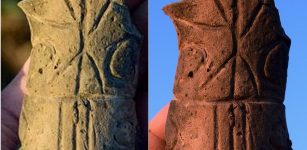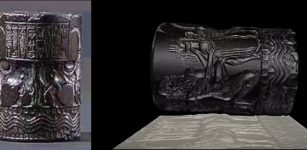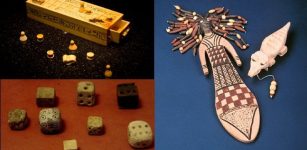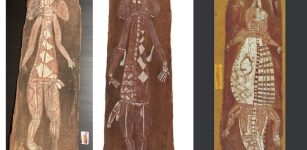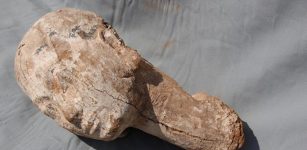‘Flower Burial’ And Shanidar Cave With Neanderthal Remains Who Lived 70,000 Years Ago
Conny Waters - AncientPages.com - Researchers have just unearthed the well-preserved upper body skeleton of an adult Neanderthal who lived about 70,000 years ago.
The place of this fascinating discovery is Shanidar Cave in the semi-autonomous Kurdistan region of northern Iraq, which is one the most important archaeological sites of the mid-20th century.
In Shanidar Cave - excavated in the 1950s by archaeologist Ralph Solecki - have been discovered many fossils of ten Neanderthals - seven adults and three infants - men, women, and children.
Some were clustered together, with clumps of ancient pollen surrounding one of the skeletons.
The recent find offers fresh evidence that Neanderthals buried their dead and conducted funerary rites with flowers but critics have argued regarding the "flower burial," saying the pollen could have been modern contamination from people working and living in the cave or from burrowing rodents or insects.
Does evidence from this extraordinary site actually point to death rituals or burial of any kind? Were Neanderthals really capable of such cultural sophistication?
Left: Illustrated reconstruction of a Neanderthal man. Hermann Schaaffhausen, 1888.; Right: Quick sketch of the Neanderthal body position by Dr Emma Pomeroy.
More than 50 years later, a team of researchers has reopened the old Solecki trench to collect new sediment samples and discovered the crushed skull and torso bones of another Shanidar Neanderthal.
The discovery has been named Shanidar Z. The skeleton was found to be reclining on his or her back, with the left arm tucked under the head and the right arm bent and sticking out to the side.
"The new excavation suggests that some of these bodies were laid in a channel in the cave floor created by water, which had then been intentionally dug to make it deeper," said Barker. "There is strong early evidence that Shanidar Z was deliberately buried."
See also:
Did Neanderthals Practice Religion?
Why Did Neanderthals Visit A Special Cave In Jersey For Over 100,000 Years?
Mysterious Archaic Cavemen – Denisovans – Were Relatives To Neanderthals And Humans
CT-scans in Cambridge have revealed the petrous bone - one of the densest in the body; a wedge at the base of the skull - to be intact, offering hope of retrieving ancient Neanderthal DNA from the hot, dry region where "interbreeding" most likely took place as humans spilled out of Africa.
 View of the entrance to Shanidar Cave, in the foothills of the Baradost Mountains of North-East Iraqi Kurdistan. Credits: Graeme Barker
View of the entrance to Shanidar Cave, in the foothills of the Baradost Mountains of North-East Iraqi Kurdistan. Credits: Graeme Barker
"So much research on how Neanderthals treated their dead has to involve returning to finds from sixty or even a hundred years ago, when archaeological techniques were more limited, and that only ever gets you so far," Dr Emma Pomeroy, from Cambridge's Department of Archaeology, lead author of the new paper, said a press release.
"To have primary evidence of such quality from this famous Neanderthal site will allow us to use modern technologies to explore everything from ancient DNA to long-held questions about Neanderthal ways of death, and whether they were similar to our own."
Ralph Solecki died last year aged 101, having never managed to conduct further excavations at his most famous site, despite several attempts.
"What is key here is the intentionality behind the burial. You might bury a body for purely practical reasons, in order to avoid attracting dangerous scavengers and/or to reduce the smell. But when this goes beyond practical elements it is important because that indicates more complex, symbolic and abstract thinking, compassion and care for the dead, and perhaps feelings of mourning and loss," Pomeroy said.
In 2011, the Kurdish Regional Government approached Professor Graeme Barker from Cambridge's McDonald Institute of Archaeology about revisiting Shanidar Cave.
"We thought with luck we'd be able to find the locations where they had found Neanderthals in the 1950s, to see if we could date the surrounding sediments," said Barker. "We didn't expect to find any Neanderthal bones."
In 2016, in one of the deepest parts of the trench, a rib emerged from the wall, followed by a lumbar vertebra, then the bones of a clenched right hand. During 2018-19, researchers uncovered a complete skull, flattened by thousands of years of sediment, and upper body bones almost to the waist - with the left hand curled under the head like a small cushion.
"Whether the Neanderthal group of the dead placed around 70,000 years ago in the cave were a few years, a few decades or centuries – or even millennia – apart, it seems clear that Shanidar was a special place, with bodies being placed just in one part of a large cave," Barker said.
Pomeroy said: "In recent years we have seen increasing evidence that Neanderthals were more sophisticated than previously thought, from cave markings to use of decorative shells and raptor talon. If Neanderthals were using Shanidar cave as a site of memory for the repeated ritual interment of their dead, it would suggest the cultural complexity of a high order."
Neanderthals inhabited Eurasia from the Atlantic coast to the Ural Mountains from about 400,000 years ago until a bit after 40,000 years ago, disappearing after our species established itself in the region. The two species interbred, with modern non-African human populations bearing residual Neanderthal DNA.
Written by Conny Waters - AncientPages.com Staff Writer




